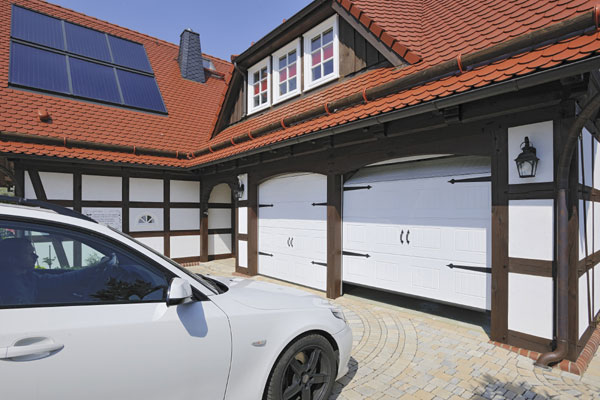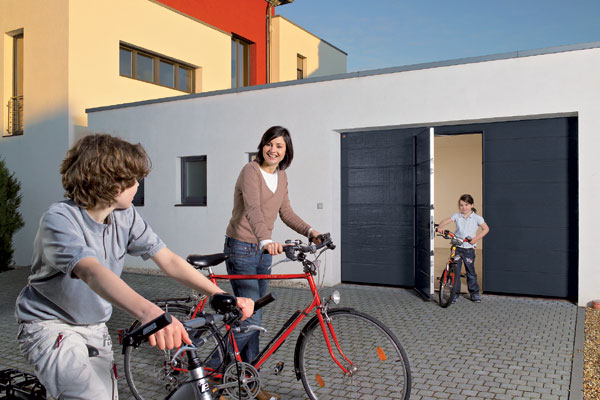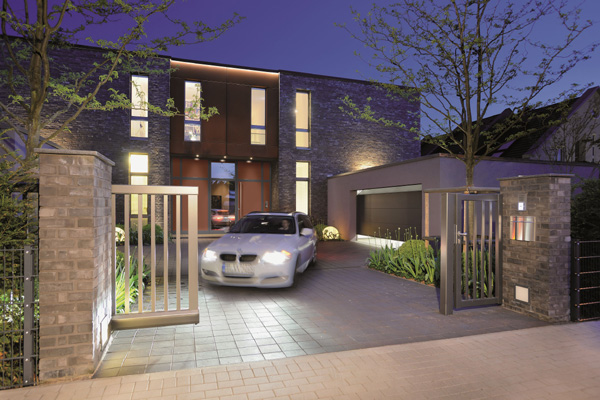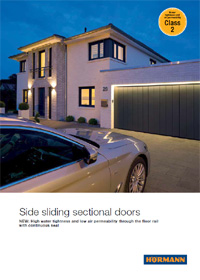Quality, Reliability & Great Value
Garage Doors Baldock, Hertfordshire | Garage Door Repair Baldock, Hertfordshire | Roller Shutter Garage Doors Baldock, Hertfordshire
A new garage door is often a home improvement that is overlooked! We frequently agonise over what pavers will look best in our garden, or what double glazing and front door will look good, but rarely consider the garage door to be an important part of the property.
A stunning looking property will be spoilt if you have a rotting or denting and peeling old garage door. Garage doors are far more than just the old metal up and over garage doors that nearly everyone had a few years ago. You can now have a wide array of styles, colours and materials to make the garage door fitted on your Baldock property really stand out from the crowd, complimenting your home perfectly.
Where is Baldock?
Baldock is a quaint and historic market town in the North Hertfordshire district of Hertfordshire. The River Ivel rises from springs in Baldock. It lies thirty three miles north of London and fourteen miles north northwest of the county town of Hertford. Nearby towns include Royston to the northeast, Letchworth and Hitchin to the southwest and Stevenage to the south.
History of Baldock
Baldock has a very rich and varied archaeological heritage. Palaeolithic, Neolithic and Bronze Age settlements show the site of Baldock has been continuously occupied since prehistoric times.
The earliest monument in Baldock is a narrow cursus, in other words, structures resembling ditches or trenches, probably from the middle Neolithic period. At the beginning of the Iron Age there was a hill fort at Arbury Banks, to the northeast of Baldock that dominated the area. In the Late Iron Age, around 100 BC, the local power base shifted from the hill fort to the vicinity of Baldock. The soil was easily farmed and transportation was more convenient. In the later part of the middle Iron Age Baldock became the site of a large fortified settlement or town, arguably the largest such site in Britain. The oppidum, as these were known in turn became a sizeable Roman settlement, which although not administratively important, seems to have been a significant cult centre. The Baldock area is also host to the highest quantity of finds of ancient coins in Hertfordshire after the Verulamium region. The site was used until the fifth or sixth century. The Roman settlement gradually disappeared and there is no entry for Baldock in the Domesday Book.
Baldock and the Templar Knights
Baldock was founded by the Knights Templar, after whom the town's secondary school is named as a medieval market town in the 1140s. It was laid out by the Knights Templar on land in the manor of Weston in the hundred of Broadwater, granted by the earl of Pembroke, Gilbert de Clare, before his death in 1148. The 1850 tithe map, drawn up before the parish boundaries were extended in the later 19th century, clearly shows the boundaries of the land grant made from the manor of Weston in the 12th century; it is a triangular parcel of land beside the old Roman Road, cut out from an older estate.
The popular story for the origin of the name Baldock is that it is a derivation from the Old French name for Baghdad: Baldac or later Baudac. While Damascus was the farthest location of Templar military activity during the Crusades, they would have been aware of the significance of Baghdad, which was widely regarded as the most prosperous market in the world. Perhaps the Templars hoped that the name would confer a similar prosperity on their own market town in England. Founding contemporaneous documents use the spelling Baudac, but it is first recorded as "Baldac" in the Pipe Rolls of Hertfordshire in 1168.
Others, however, consider it more likely that the Knights Templar used a name already in use, particularly since the location was already a crossroads. In addition the settlement was already thriving as a late Anglo-Saxon part of Weston. Alternative etymologies have been suggested, including Middle English balled, meaning "bald", together with Old English ac, meaning "oak", as the site may have been identified by a large old tree near the Anglo-Saxon graveyard or where the Templar church was built; and a conjectured Old English personal name Bealdoc, from beald, meaning "bold", with a diminutive -oc suffix. These derivations, however, are not generally favoured amongst historians.
There has been human activity on the Baldock site well before the modern town was founded. Prehistoric remains on Clothall Common date back as far as c 3000 BCE. Many Roman remains have been discovered in building work in and around Baldock, and the core of the Roman settlement lies between Walls Field and Bakers Close. Earlier Iron Age remains have also been uncovered in the same general location, which may be the earliest town ever to develop in Britain.
A medieval leper colony, on Royston Road, was located during excavations in 2003, having been thought for many years to lie to the south-east of Baldock on the former Pesthouse Lane, which is now Clothall Road, on the A507.
From 1808 to 1814, Baldock hosted a station in the shutter telegraph chain that connected the Admiralty in London to its naval ships in the port of Great Yarmouth.
The modern evolution of Baldock
The modern layout of Baldock and many buildings in the centre date from the sixteenth century, with the earliest dating from the fourteenth century.
Owing to its location, Baldock was a major staging post between London and the north: many old coaching inns still operate as pubs and hotels, and Baldock has a surprising number of pubs for its relatively small size. The High Street is very wide, a typical feature of medieval market places where more than one row of buildings used to stand. In the case of Baldock, the bottom of the High Street had three such rows, until Butcher's Row was demolished by the turnpike authorities in the 1770s.
It is generally accepted that Baldock has more than its fair share of public houses because neighbouring Letchworth was originally a temperance town, thus people would travel to Baldock in order to have a drink.
Since the 16th century, Baldock has been a centre for malting, subsequently becoming a regional brewing centre with at least three large brewers still operating at the end of the 19th century, despite a decline in demand for the types of beer produced locally. The 1881 Census records approximately thirty drinking establishments. Throughout the early 20th century a large number of pubs continued to operate, many of which were sustained by the adjacent and much larger town of Letchworth, which, as alluded to above, had no alcohol retailers prior to 1958, and had only two pubs and a single hotel bar until the middle of the 1990s.
The Wynn almshouses, in the High Street of Baldock, were founded in 1621 and were endowed "To the World's End" by John Wynne, a cloth merchant from London who left £1000 in his will of 1614 for their upkeep.
Since 1850, Baldock has had a railway station which today operates on the line between London Kings Cross and Cambridge. With frequent services to London, including fast services of around thirty minutes, Baldock is home to many London commuters. Baldock station is part of the Thames link Programme which connects Cambridge to Farringdon, City Thames link and Blackfriars via the Great Northern Route.
Baldock's position at the crossing of two important thoroughfares, the Great North Road and the Icknield Way has made it a stopping point for a number of important visitors, including Charles I, who passed through Baldock en route for London after his arrest in 1648 and supposedly the notorious and celebrated highwayman Dick Turpin. Preacher John Wesley, the founder of the Methodist Church came to Baldock in 1747.
In the 1960s and 70s Baldock was a centre of laser research at a MOD laboratory called SERL (Services Electronics Research Laboratory). This facility closed in the late 1970s and some projects and staff were transferred to RSRE (Royal Signals & Radar Establishment) near Pershore.
Church of St Mary the Virgin in Baldock
Another very notable building in the town is the thirteenth century Baldock Parish Church of St. Mary the Virgin at the centre of the town. The original church was built in about 1150 by the Knights Templar before being largely rebuilt in about 1330 by the Knights Hospitaller. It is a Grade I listed building.
Malting and brewing were formerly major industries in Baldock, but apart from some light industry, today it is mostly a commuter town.
According to the humorous book The Meaning of Liff, which gives alternative meanings for geographical place names, a Baldock is defined as: "The sharp prong on the top of a tree stump where the tree has snapped off before being completely sawn through".
Take the plunge with a new garage door in Baldock
Make your Baldock home the envy of the street with a new garage door from ACE Garage Doors. Garage doors have come a long way from the clunky metal up and over garage doors of yesteryear. Today there is a garage door that will compliment any property perfectly.
So, if you live in or around Baldock, give ACE Garage Doors a call to discuss your garage door requirements.
We also cover the following areas in Hertfordshire:
- Borehamwood, Hertfordshire - Garage Doors | Garage Door Repair | Roller Shutter Garage Doors
- Broxbourne, Hertfordshire - Garage Doors | Garage Door Repair | Roller Shutter Garage Doors
- Elstree, Hertfordshire - Garage Doors | Garage Door Repair | Roller Shutter Garage Doors
- Harpenden, Hertfordshire - Garage Doors | Garage Door Repair | Roller Shutter Garage Doors
- Hertford, Hertfordshire - Garage Doors | Garage Door Repair | Roller Shutter Garage Doors
- Hitchin, Hertfordshire - Garage Doors | Garage Door Repair | Roller Shutter Garage Doors
- Hoddesdon, Hertfordshire - Garage Doors | Garage Door Repair | Roller Shutter Garage Doors
- Letchworth Garden City, Hertfordshire - Garage Doors | Garage Door Repair | Roller Shutter Garage Doors
- Potters Bar, Hertfordshire - Garage Doors | Garage Door Repair | Roller Shutter Garage Doors
- Radlett, Hertfordshire - Garage Doors | Garage Door Repair | Roller Shutter Garage Doors
- Rickmansworth, Hertfordshire - Garage Doors | Garage Door Repair | Roller Shutter Garage Doors
- Royston, Hertfordshire - Garage Doors | Garage Door Repair | Roller Shutter Garage Doors
- St. Albans, Hertfordshire - Garage Doors | Garage Door Repair | Roller Shutter Garage Doors
- Stevenage, Hertfordshire - Garage Doors | Garage Door Repair | Roller Shutter Garage Doors
- Waltham Cross, Hertfordshire - Garage Doors | Garage Door Repair | Roller Shutter Garage Doors
- Watford, Hertfordshire - Garage Doors | Garage Door Repair | Roller Shutter Garage Doors
- Welwyn Garden City, Hertfordshire - Garage Doors | Garage Door Repair | Roller Shutter Garage Doors
ACE Garage Doors
For 29 years Ace has been supplying, fitting, servicing and repairing Garage Doors, with thousands of satisfied customers in Hertfordshire and all over the South East. Providing truly excellent customer service means everything to us at ACE Garage Doors, so we put our customers needs at the heart of our business and strive to provide a friendly, prompt and speedy service without compromising on quality or value.
If you are looking for high quality Garage Doors and service you can trust then contact ACE Garage Doors for a QUICK QUOTE today.

Why choose ACE Garage Doors?
- Established 29 years
- Fast and friendly service
- 10 year door guarantee
- 5 year motor guarantee
- No deposit required
- Established brands
- Award winning service

Speed
We aim to respond to enquiries the same day, and provide a rapid quote. If a FREE site survey is required we aim to get to you within 48 hours. We also have a 24/7 repairs service where one of our skilled team will attend to secure your property, or rescue your car!
Customer service
Customer satisfaction is at the forefront of everything we do. We recognise that people lead busy lives, and so we aim to be responsive to enquiries, provide realistic lead-times and do not take any payment until the job is finished and our customers are 100% satisfied.
Quality
Our team has 36 years in the industry and only work with established brands we can set our reputation against, plus
we have no sales people or middle men you will be dealing direct with the owners of the company, Darren and Simon.
Read our story here.
Expertise
ACE Garage Doors offer a full fitting and repair service carried out by our professionally qualified team. From the replacement of individual parts through to a full renovation of your garage, ACE Garage Doors are experts in our field with many years of experience to draw on.

Garage door services
- Extensive range of doors
- All doors fitted by experts
- FREE quotes
- Automated operation
- Full servicing and repairs
- 24/7 call out available

Garage door types
- Electric roller shutters
- Sectional garage doors
- Remote controlled doors
- Insulated garage doors
- Canopy / up & over doors
- Side hinged garage doors


Professional team
- Proud of our reputation
- Fully qualified team
- Over 30 years' experience
- Regularly recommended
- Covid safe services
- Support local football clubs

Areas covered
- Hertfordshire
- Bedfordshire
- Buckinghamshire
- Cambridgeshire
- Essex
- North London

Pricing
We offer extremely competitive pricing by keeping our overheads low, buying in bulk and then passing the savings onto our customers. We have a reputation for providing great value and as a result, we frequently get referred to our customers' families, friends and neighbours.
Industry leading warranties
We offer 10 year warranties for all our up and over and roller doors and frames, and an industry leading 5 year warranties on all our tubular motors, such is our confidence in the quality of our work and components. We also offer 2 year warranties on parts and labour for garage door repairs.
Eco-friendly
As a company we are extremely environmentally aware, and all waste materials, from your old door to the packaging materials for the new product are taken for recycling at our own cost. So by choosing ACE Garage Doors you can be reassured that you are also playing your part to protect the environment.
Easy to follow ordering process
During the FREE SURVEY precise measurements will be taken and your needs matched against a wide range of products from leading manufacturers with whom we deal direct. We will discuss the various materials and finishes available, as well as any optional extra features you might have requested such as glazing and automation.
We can provide doors in almost any colour you can imagine, so provide us with a specific RAL colour or ask us about our colour matching service and we will find it for you! We will inform you of the price fully inclusive of VAT, and if an insurance claim is being made we are happy to provide a written quotation. We don't charge you to take your door away, and it will be recycled for you. Simple.
Selection of garage doors available from ACE Garage Doors
Get a QUICK QUOTE or request more information
If you would like a QUICK QUOTE then please contact us on 01438 742 664 or email us at info@ace-garage-doors.co.uk and we will be in touch shortly.
Further information:
- Sectional Garage Doors in Herts, Beds, Bucks, Essex and North London
- Roller Shutter Garage Doors in Stevenage, Hertfordshire
- Garage Doors in Luton, Bedfordshire
- Garage Doors in Broxbourne, Hertfordshire
- Garage Doors in Epping, Essex
- Garage Door repair in Barnet, London
- Garage Door repair in Biggleswade, Bedfordshire
- Garage Doors in Harpenden, Hertfordshire
- Garage Doors in Hertford, Hertfordshire
- Garage Doors in Hitchin, Hertfordshire
- Garage Doors in Hoddesdon, Hertfordshire
- Hormann Garage Doors in Stevenage, Hertfordshire
- Hormann Sectional Garage Doors in Stevenage, Hertfordshire
- Hormann Sectional Garage Door repair in Stevenage, Hertfordshire
- Hormann Sectional Garage Doors in Stevenage, Hertfordshire
- Garage Doors in Letchworth, Hertfordshire
- Garage Doors in Potters Bar, Hertfordshire
- Garage Doors in Royston, Hertfordshire
- Garage Doors in St Albans, Hertfordshire
- Garage Doors in Welwyn Garden City, Hertfordshire
Hertfordshire
Bedfordshire
Buckinghamshire
Cambridgeshire
Essex
North London
Areas covered :: Articles :: Privacy policy :: Vacancies :: Website map


























